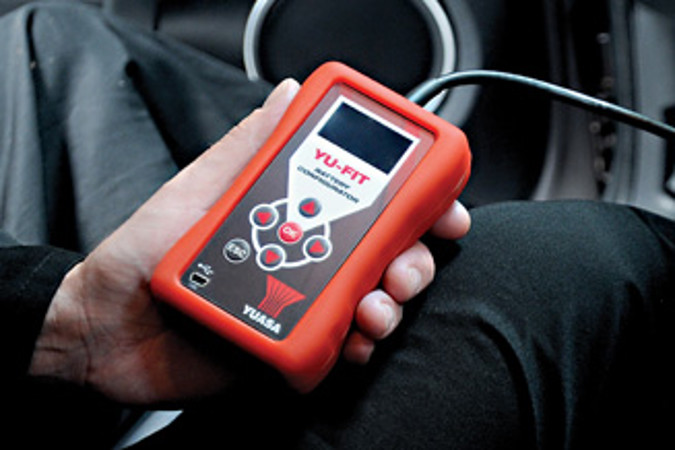So to begin with, a nice easy way to check the health of your battery is looking at the state of charge indicator. This provides a snapshot of your battery’s current condition. Green means it is charged and healthy, clear means it needs to be recharged, and red means it needs replacement.
To go one step further – we need to use our voltmeter to measure the battery voltage. This can be done with the battery in or out of the vehicle, but ideally the vehicle should not have been driven for at least the past 24 hours.
Grab your voltmeter and put the positive probe on the positive post, and the negative to the negative. This will give you the resting voltage of the battery – in this case 12.7 volts. So what does this tell us?
Well what you need to learn first is the voltage range in which a lead-acid battery should be operating. A healthy, fully charged battery should be sitting at 12.7 – 12.8 volts. And at the other end of the scale, a lead-acid battery is considered fully discharged when it reaches 12.0 volts. Finally, to remain healthy, a lead-acid battery should be at least above 12.5volts at all times.
So what can we learn here?
- At 12.7 volts, this battery should be healthy and ready to go.
- If your battery reads 12.5 volts or below, it needs to be recharged straight away before testing it again. A healthy battery should be able to maintain at least 12.5 volts, and if it eventually falls back under 12.5 volts following a recharge, it is your first warning sign that it is becoming weaker with age.
- In truth, the resting voltage of a battery is just one part of battery testing – but it’s an easy thing to test and a great starting point.
- What’s more important is measuring what voltage your battery falls to once it is under load – for example, when you are starting your engine. A battery monitor can measure this for you, otherwise the vehicle should be tested properly by a professional using a battery tester.
 Homepage
Homepage
 Homepage
Homepage


